Greetings. It is early on Saturday morning and the anticipated snow has begun in Iowa City. We are approaching the darkest time of the year. One more week and then it will get brighter, slowly. There were two wonderful days midweek, with sun and warm temperatures. In a different world we would have closed the office early and enjoyed what might have been the last warm days in some time. But we did not do that.
Here are pictures from Saturday morning. It actually was/is that winter wonderland.
I did spend time during the week thinking about the pictures this week. That made me realize how much I enjoy gardening and writing about gardens. And there is so much I do not know about certain types of plants, like primroses.
One thing about the snow, which might have been 3 inches when it was done, is that it will mostly end the outside garden cleanup. Those leaves that are on the ground will still be there in February. When do you do garden cleanup? You may have heard me say this before: when you get the time to do it.
What happened in Week #2 in the contest?
Here was the winner. It was a glorious color.
Here was the full vote.
I should note that the lilium Fiamma had good support. At some point one can think about who is in contention for the wild card spots. Those are determined by the percentages of the votes. With 26% Fiamma sets the initial bar. How many wild cards will there be? There will be 13 weeks, followed by probably three weeks of playoffs. I look for at least 15 pictures to advance. That would be 2 wild cards, but that number gets reduced if there are ties, like in Week #1.
Week #3
#1 Daylily Summer Hymns
July 18, 2020
Orange can be an overlooked color when we think about favorites. This orange daylily practically jumps off the page.
It has the color. It also has the ruffles.
Daylily hybridizing has really gone after the ruffles.
It is easy to hybridize your own daylilies. You can do it with you fingers. You just take the pollen from one plant and put it on the tip of the pistil of another plant. You harvest the seed in the fall, plant it later, and then wait a few years to see what you got. There is more in the bonus section.
#2 Primrose japonica Apple Blossom
May 26, 2020
Primroses, actually called primula, are one of those families of plants that could develop into an obsession. When I look at or talk about pictures I wonder if 2021 could be the year where I just go all in for primroses?
This flower is primula japonica 'Apple Blossom'.
It is native to...Japan.
It is described as a part shade lover. That certainly is my garden.
I got this plant 2 years ago. I have found most of these primroses to be finicky. I recommend paying a little more at the front end and getting the plant from a company with a good warranty. There are such companies out there.
I am told that they can be grown from seed. Maybe I should give it a try. It is about time to do some seed shopping.
Here is wikipedia about the genus primula.
#3 Cypripedium orchid named Gisela
May 16, 2020
This is a hardy orchid. It grows in the ground. That means it is referred to as a terrestrial orchid. The genus is Cypripedium. This one is Gisela. It is a cross between two species; Cypripedium macranthos and Cypripedium parviflorum v. parviflorum.
It is supposed to be one of the easiest to grow of all the Cypripedium that grow this far north. I can testify to this because I have grown other Cyps and they have not survived.
I understand location is the big thing. I have this plant, which is now a clump, by the back driveway, where it gets sun in the early spring, but then a fair amount of shade until it fades away in July.
I have had the plant since 2008. There were two shoots with several flowers/shoot for about 7 years. There are were 3 shoots and 9 flowers in 2020. The picture is in the bonus section.
They were so nice I got two more plants, one of which was another Gisela. We will see if they come up in April.
#4 Red Coneflower
July 5, 2020
Coneflowers have been a plant for the 21st Century. The hybridizers have been busier with this than almost any other plant. A catalogue will have pages of varieties.
There are red ones and yellow ones and white ones and orange ones. Some have bushy tops.
This one is probably Salsa Red. I will confess that I have not been as careful with which names go with which plant. I do like the name of one that is Tomato Soup.
Coneflowers are the genus echinacea.
Here is more than you probably want to know about the genus.
They do take sun. That is in short supply in our garden. So I am finding the little pockets of sun and seeing how they will grow.
I will write more later in the contest. (That is the hint of what is to come.)
#5 Clematis Henryi
May 24, 2020
Clematis are certainly wonderful. I have a few in the garden. I started counting and realized that I had 8 different ones. I have mostly planted them and left them alone. This is not their ideal care. I planted this one maybe 6-8 years ago. It has just taken off in the last year. I suppose that can be one way to garden. You try stuff and the ones in the right location that are hardy will survive.
Henryi is listed as a large, vigorous deciduous climber with high white flowers that can be 6-8 inches across, with chocolate brown anthers. Supposedly it can rebloom late in the year but that hasn't happened for me yet.
Please see the bonus section for a brief anatomy lesson. Hint - an 'anther' is the tip of the stamen, where the pollen resides.
Also in the bonus section is a closeup of the center of the flower. I sometimes struggle with the decision of which picture should be in the contest. I was very close to using this closeup instead of the full flower.
There you have the contestants for Week #3.
I am always interested in knowing why you picked a particular flower.
Bonus Pictures
More about clematis
Here is that closeup of Henryi.
Here is the vine in 2020.
This almost was the first year I had really paid attention to the plant.
It will be on the radar this coming spring.
Clematis are divided into groups for pruning purposes. It is important to know your group. Group 3, such as the Sweet Autumn clematis, gets pruned almost to the ground. The others do not. Here is more about pruning.
https://pallensmith.com/2014/10/03/3-ways-prune-clematis/
Here is the wikipedia about Clematis.
https://en.wikipedia.org/wiki/Clematis
Here are other clematis from the garden.
This nice climber is on a trellis on the west side of the house. It gets full afternoon sun 4-5 hours day.
It climbs to the top of the trellis and keeps going. We have now put stings from the second floor window down to the trellis.
Planting any plant next to the foundation is tricky. It gets very dry. The overhang of the roof means it might not even get rain when there is rains.
So you have to pay attention. Sometimes that is easier than others. This plant is perhaps named Huldane but I am not sure.
This climber is Duchess of Albany. It seems like more clematis are named for royals that any other plant I can think of.
I am not sure what I think about that.
I do not think there is a hosta named for royalty. (Actually I just remembered the hosta Diana Remembered.)
This clematis, like the Sweet Autumn clematis, is pruning type 3. You cut it down each year. I have a cow-jumping- over-the-moon trellis in the front yard, where this plant grows.
The flowers bloom off and on throughout the year.
This picture is from 2008. As of 2020 it should have a good root system.
These are the flowers from the Sweet Autumn clematis. We have one that grows on the back fence by the pond. It has been there for a long time - perhaps 20 years.
I think this might be the one that grows in more gardens.
It is in the third pruning type. That means you cut it down, within perhaps 6 inches of the ground each winter. Actually it is recommended that you cut it in maybe February - certainly late winter. This is to avoid it starting to grow when there is a warm spell during winter.
It is not too flashy. Perhaps for that reason I could not find a picture of it growing on the fence.
It can grow to thirty feet in height, if permitted. Unless pruned it has been known to be so heavy as to do damage.
I do find it fertile. With all those little flowers there are a lot of seeds. This spring I will try to pot them up to share.
One of the more impressive sights is this blooming vine grown on a column of some sort.
This is probably Jackmanii.
Why the double "i", I wonder.
Anatomy lesson. I do try to be educational - you are welcome to skip these parts if you wish.
Things to remember. Mostly there is the stamen and the pistil. Stamen is the male part, and has the pollen.
With daylily pollination you take the pollen from the stamen and put it on the tip of the pistil. As the flower only blooms for one day you can then clip the spent flower off about an inch above the base of the stamen. That is where the seed might grow. Usually you will know in about a week whether there has been fertilization. That part of the plant will grow a little, with the seed pod drying in the fall when you can harvest the seeds.
You plant them in the spring or over the winter if you are so inclined. If the seeds germinate, the tiny plant will then take 3-4 years to bloom for the first time. Actually that moment can be exciting. You never know what this new plant will look like. By that point you would have forgotten who were the parents. (The more compulsive among us could write it down.) It could be the color of mud or something exciting. Gardening in order to get a result in 3-4 years takes a particular attitude.
More about primroses.
In thinking about primroses I remembered where we had seen primroses in the wild. That was on a magical trip we had taken to Maine in June of 2017. Remember when we could travel places? You can see some of the pictures from that trip in the archive. It is located on the right near the top of the blog. Below the poll. Because the archive goes back so far there are three posts lumped together for June 2017. The pictures from that trip are in the oldest one. You have to scroll through the first two to get there.
We went to Maine for a week and then went to New York City for grandson Christopher's baptism. In NYC we went saw a Chihuly installation at the botanical gardens in the Bronx. There are pictures from that too in the June 2017 blog post.
Our daughter Katie and her family live in Portland (Maine), having moved there from NYC. In Maine we stayed on a little island called Chebeague. I believe that is a native American name. Remember Chincoteague? That island is on the eastern shore of Virginia, where my father was born.
But Chebeague was this little island, accessible by ferry only. It was June and springtime in Maine. There still were daffodils.
This picture was taken along one of the streets in Chebeague. The ferns were good too.
This was further along that same street. I do not remember about deer on Chebeague. I will look to see how tasty primroses are. Isn't google great? I asked if deer like primroses and was told "no."
This next picture was taken at the Coastal Maine Botanical Garden, about an hour north of Portland. As they say...if you are ever in the neighborhood. It is a wonderful place, all the greater because it is out in the middle of nowhere. In June it was a magical place.
Here are primrose pictures from the garden. A few comments:
Some are more hardy than others. Sometimes the expression 'tender perennial' comes to mind. Location is important.
This one is named Wanda. What a great name. I did find it hardy.
Julia's recipe
Angel hair pasta with mushroom sauce
Here is the link to the other blog with all for Julia's recipes.
https://mearskitchen.wordpress.com/
I don't think I ate a fresh mushroom until I was grown up and out the door. I thought mushrooms came in little glass jars. I liked the mushrooms in little glass jars well enough, but I did not think of them as a core ingredient and I did not realize how many varieties there were. Now I know better, and I only buy fresh mushrooms. This recipe is for a mushroom sauce with thin spaghetti, and it comes from the NYTimes cooking website. The technique is unusual (in my experience, at least) but not hard, especially if you have a food processor.
Here are the ingredients: 5 cups of chicken stock (or reconstituted bouillon); 1 cup of heavy cream; about 1-1/2 lb. of fresh mushrooms finely chopped; 1/2 cup onion (or shallots if you have shallots), finely chopped; 1-1/2 teaspoon of garlic, smushed; 1/3 cup olive oil; 1/3 cup port or marsala (really); some salt and pepper; some herbs (they say thyme, I had parsley) and 1 lb. of angel hair pasta.
I do not know why there is a flashlight in the picture or a container of salad dressing (both on the right, behind the parsley).
A note on mushrooms: I bought 4 oz. of shiitakes; 3 big portabellas and a little less than 1 lb. of cremini. I think 2 kinds of mushrooms would be sufficient variety. Or maybe even all cremini. Not all button, which I think would be too bland by themselves.
I started by washing the mushrooms and rubbing off any dirt that stuck. I cut off and discarded the shiitake stems which really are inedible. I cut off any weird spots on the stems of the portabellas and cremini. I just wash mushrooms under running water in a colander. No mushroom brush for me. I cut the portabellas into big pieces.
Then I cleaned the onion and cut it into chunks, and I cleaned and smushed the garlic (4 cloves).
Next I put the food processor together and pulsed the onion and the mushrooms.
I put a big skillet on the stove and heated the 1/3 cup of olive oil gently on medium low heat. As the food processor work bowl got full, I dumped the contents into the skillet; gave it a stir and processed some more mushrooms.
I poured the chicken stock and heavy cream into a spaghetti cooking pot, along with 2 teaspoons of salt.
I let the pot sit quietly until needed while I worked on the mushrooms.
Here are the mushrooms/onions cooking in the olive oil.
The skillet in the background has croutons in it for the green salad that went with the spaghetti. We like green salad all year round, and we like croutons.
After all of the mushrooms were in the skillet, I added the garlic and some salt and pepper; turned the heat up to medium high and let the mixture cook for about 10 minutes (stirring regularly) until the mushrooms had given up.
While the mushrooms were cooking, I turned the heat on under the pot of stock and dairy.
Then I added the port to the mushrooms and cooked the mixture for another 2 minutes.
A word about port or marsala. I bought port. I think dry sherry would work too. One is looking for a sweet-ish kick to the sauce. I don't think wine would do it. I also think the sauce would be tasty without any alcoholic enhancement.
By the time the liquid came to a boil, the mushrooms were pretty much done.
I added the angel hair to the pot. You will have noticed that 6 cups of liquid is not very much to cook 1 lb. of pasta. This is true. The idea is that the pasta will, in fact, soak up almost all of the cooking liquid, and it did. So one must pay attention to the pasta as it cooks. Also recall that angel hair does not take more than 3-5 minutes to cook.
If the pasta begins to congeal, add a little water. I needed to do that.
When the pasta was done, I dumped it straight into a serving bowl. No need to drain.
Then I poured the mushroom sauce over the pasta and spread it around a bit.
Somewhere in there, I chopped up the handful of parsley I had.
Here it is. We served it with a green salad (as discussed above) and parmesan cheese and raspberries with yogurt for the finale.
Looking at the picture of this dish, I wish we had better lighting. The mushroom sauce looks dark and maybe a bit menacing. Like a mess of dark lentils. Not so. Very tasty for those of us who like spaghetti.
I think the recipe would work fine cut in half (if all that angel hair and mushroom sauce is too much). I would suggest using 3 cups of liquid to cook 1/2 lb. of angel hair. Leftovers are good - we heated leftovers in a non-stick skillet with a bit of water to thin everything out.
Odds and Ends
I can entertain myself by going through old pictures on the computer. I do this for bonus pictures.
This week I went back to see pictures of primroses.
As I scrolled through 2016 I found this amusing picture. It was taken on April 19, 2016. These hanging baskets were not available at the local nursery. Instead I transplanted 5-6 bluebells into this hanging basket, as the plants were just coming up. This shows how an early bluebell transplant will bloom that spring.
As I think about it, this kind of basket is ideal in many ways. First it can be hung before the first frost date, as bluebells can take some cold.
Then when the flowers are done, by mid May, you could plant the tubers where ever you want for next year.
I will put this on the list of things to remember for the coming garden year.
This was an odd story from the New York Times this week. You may have heard about the corpse flower plant. Those plants can draw crowds when they bloom, often attracting people because the plants smell so very bad. I find that really odd. The story is about the concern that they are becoming inbred. And what to do about it.
https://www.nytimes.com/2020/12/11/science/corpse-flowers-inbreeding-studbooks.html?surface=home-discovery-vi-prg&fellback=false&req_id=639099037&algo=identity&variant=no-exp&imp_id=928602429&action=click&module=Science%20%20Technology&pgtype=Homepage
It has gotten cold enough that the first pumpkin has been hung in the front yard. If you hang a carved pumpkin when it is cold enough, it will freeze and not rot. It will then stay intact for months.
The trick of course is to still have pumpkins. You probably can't find them in the grocery stores at this point. I have a stash left just for hanging carved pumpkins in the trees in the winter.
That is it for this week.
Enjoy the pictures.
Tell me what you think.
Stay safe.
Better times are coming.
Philip








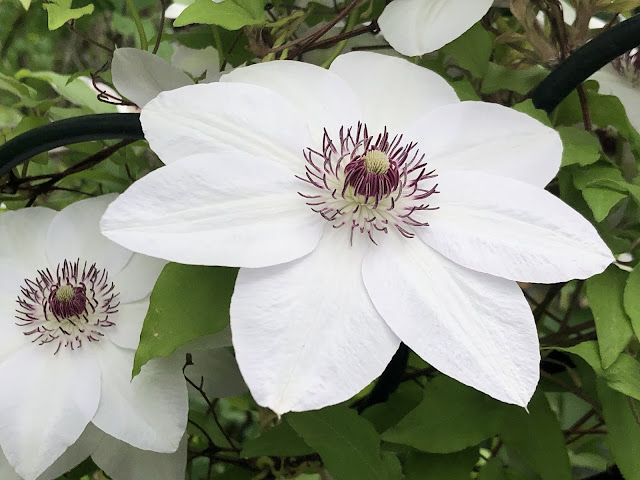


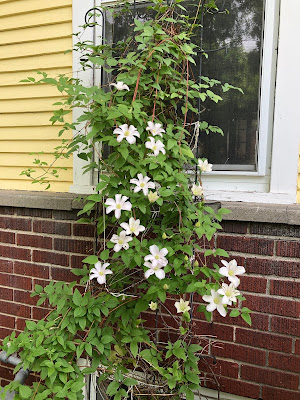


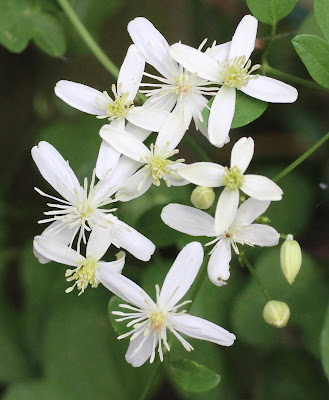




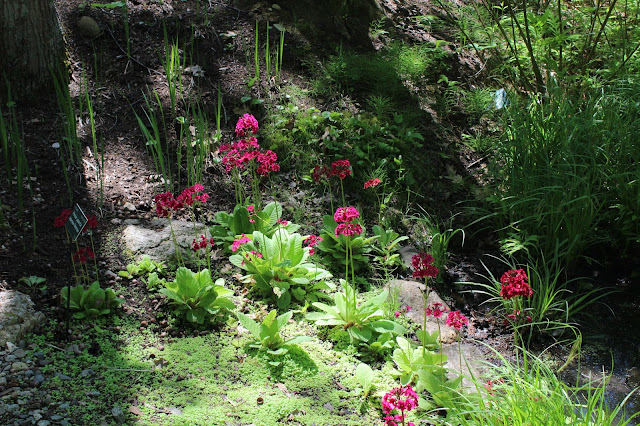

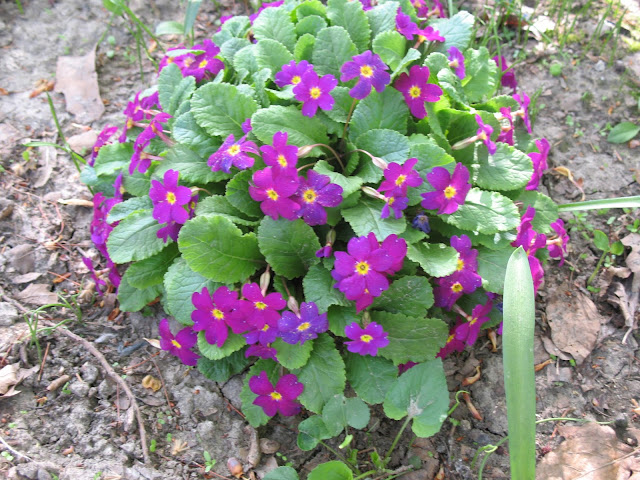













1 comment:
I love the tiny points at the ends those big white clematis petals. Something like the points on dogwood blossoms.
I can answer the question about the "ii" ending in the name of your purple clematis, "Clematis jackmanii," which is named after its breeder, George Jackman.
There are dozens of rules about the binomial classification system for plant names, including some that apply when the second element is a person's name (which is always lowercased in the official taxonomic name). Here are the rules:
(1) A single "i" is added to a name that ends in an "r" or a vowel other than "a." So if I had a clematis named for me, it would be "Clematis o'conneri."
(2) An "e" is added to a name ending in "a." So if Barak or Michelle Obama had a clematis named for them, it would be "Clematis obamae."
(3) A double "ii" (for a man) or "iae" (for a woman) is added to the person's name if it ends in a consonant other than "r." This accounts for "Clematis jackmanii." So a clematis named after Philip Mears would be "Clematis mearsii" and a clematis named after Julia Mears would be "Clematis mearsiae."
Post a Comment